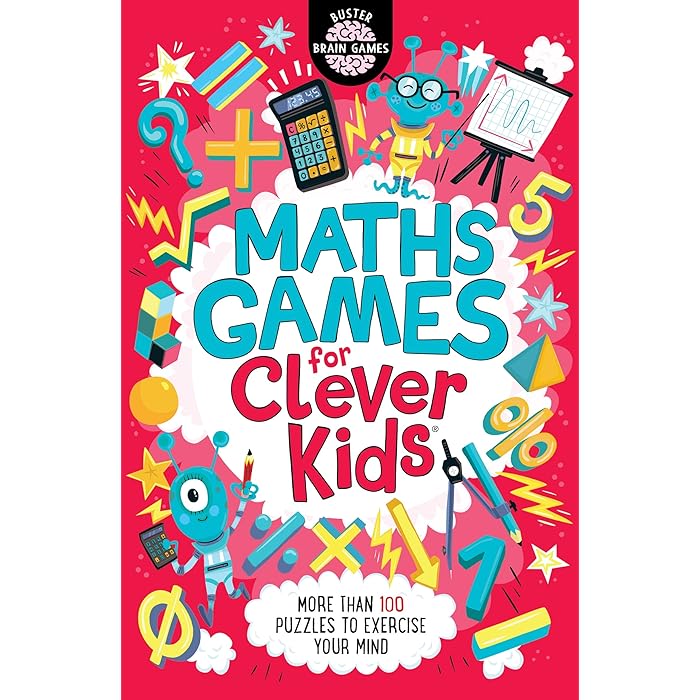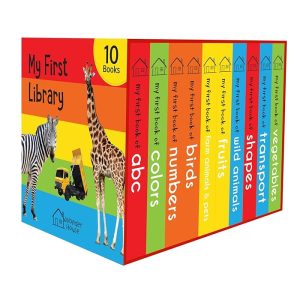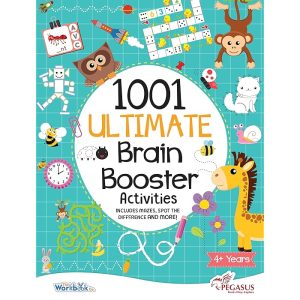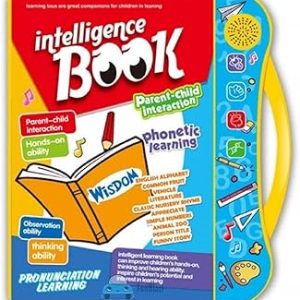Description
Math games can be a great way for clever kids to enhance their problem-solving skills, boost creativity, and develop a deeper understanding of mathematical concepts. Here are some fun and challenging math games that can engage and entertain kids while sharpening their mathematical abilities:
### 1. **24 Game**
– **Objective:** Use the numbers 1, 2, 3, and 4 (or other sets of numbers) and basic arithmetic operations (addition, subtraction, multiplication, and division) to make the number 24.
– **How to Play:**
– The game gives four numbers (e.g., 4, 7, 8, 3), and the goal is to use each number exactly once with any of the four operations to reach 24.
– This game helps kids practice operations, develop critical thinking, and learn number manipulation.
– **Variation:** Adjust the target number or the number of digits used.
### 2. **Math Bingo**
– **Objective:** Like traditional bingo, but with math problems.
– **How to Play:**
– Create bingo cards with answers to math problems (addition, subtraction, multiplication, etc.).
– Call out math problems, and kids mark the answer on their bingo cards.
– The first player to complete a line (horizontal, vertical, or diagonal) wins.
– **Why It’s Great:** This game helps reinforce mental math skills in a fun, competitive way.
### 3. **KenKen (or Calcudoku)**
– **Objective:** Solve number puzzles by filling a grid with numbers, following specific mathematical rules.
– **How to Play:**
– Each puzzle consists of a grid with pre-filled numbers in some cells and mathematical constraints (addition, subtraction, multiplication, or division) applied to small sections of the grid.
– The player must fill in the grid so that every row and column contains unique numbers, and the numbers in each section satisfy the given operations.
– **Why It’s Great:** This game is excellent for practicing logic, arithmetic, and problem-solving.
### 4. **Sudoku**
– **Objective:** Fill the grid with digits 1-9 so that each row, column, and 3×3 subgrid contains all the numbers without repetition.
– **How to Play:**
– Start with a partially filled grid and use logic and elimination to figure out the missing numbers.
– **Why It’s Great:** Sudoku helps improve logical thinking, pattern recognition, and deductive reasoning. There are many kid-friendly variations with smaller grids and simpler numbers.
### 5. **Math Jeopardy**
– **Objective:** Answer math-related questions to accumulate points.
– **How to Play:**
– Set up a Jeopardy-style game board with categories like addition, multiplication, fractions, geometry, etc.
– Each category has questions of increasing difficulty, with the point value increasing as the difficulty rises.
– Players take turns picking categories and answering questions. The one with the most points at the end wins.
– **Why It’s Great:** This game encourages healthy competition and reinforces a wide range of math concepts.
### 6. **Math Puzzles (Logic Puzzles)**
– **Objective:** Solve mathematical riddles or puzzles that require logical thinking and number manipulation.
– **How to Play:**
– Present math-related riddles or puzzles, such as “If you have 3 apples and take away 2, how many do you have?”
– The goal is to think critically and come up with a solution based on the clues provided.
– **Why It’s Great:** Logic puzzles improve reasoning skills and help kids think outside the box.
### 7. **Tangrams**
– **Objective:** Arrange seven geometric shapes to form a specific image or figure.
– **How to Play:**
– The game involves seven pieces (tans) that must be rearranged to form a particular shape, such as an animal, person, or object.
– Players can start by solving specific challenges or create their own designs.
– **Why It’s Great:** This game fosters spatial awareness, geometry skills, and problem-solving abilities.
### 8. **Fraction War**
– **Objective:** Compare fractions and determine which one is larger.
– **How to Play:**
– Use a deck of cards or create cards with fractions on them. Each player draws two cards and compares the fractions.
– The player who has the larger fraction wins the round.
– This game helps kids with understanding fractions and their relative values.
– **Variation:** For more advanced players, use mixed numbers, decimals, or percentages.
### 9. **Math Scavenger Hunt**
– **Objective:** Solve math problems to unlock clues and find hidden objects or complete challenges.
– **How to Play:**
– Set up a scavenger hunt where each clue involves solving a math problem (e.g., “Find the object that is twice the size of this one” or “What is 1/4 of 100?”).
– Players solve the problems to move to the next clue.
– **Why It’s Great:** This activity makes math an interactive, outdoor experience and encourages kids to solve problems creatively.
### 10. **Math Board Games (e.g., Sum Swamp, Money Bags)**
– **Objective:** Play a traditional board game that incorporates math problems.
– **How to Play:**
– In games like *Sum Swamp*, players roll dice and solve math problems to move along a game board, collecting items or advancing through challenges.
– *Money Bags* is a game where players practice addition and subtraction of money while moving around the board.
– **Why It’s Great:** These games make learning math enjoyable and apply it to real-world scenarios.
### 11. **Digital Math Games (Apps/Websites)**
– **Objective:** Use digital platforms to play math games.
– **How to Play:**
– There are many apps and websites that offer engaging math games for kids, like *Prodigy Math Game*, *Khan Academy Kids*, or *Mathletics*.
– These platforms often include interactive lessons, quizzes, and challenges to help kids learn and practice math.
– **Why It’s Great:** Digital games can be personalized to a child’s skill level, offering an engaging way to practice.
### 12. **Math Card Games (e.g., “Addition War” or “Multiplication War”)**
– **Objective:** Use a deck of cards to practice arithmetic operations.
– **How to Play:**
– In *Addition War*, each player flips two cards, adds them together, and the player with the highest sum wins the round.
– *Multiplication War* involves multiplying the numbers on the two flipped cards, and the player with the highest product wins.
– **Why It’s Great:** It’s a simple yet effective way to practice math facts in a fun, competitive setting.
—





Reviews
There are no reviews yet.